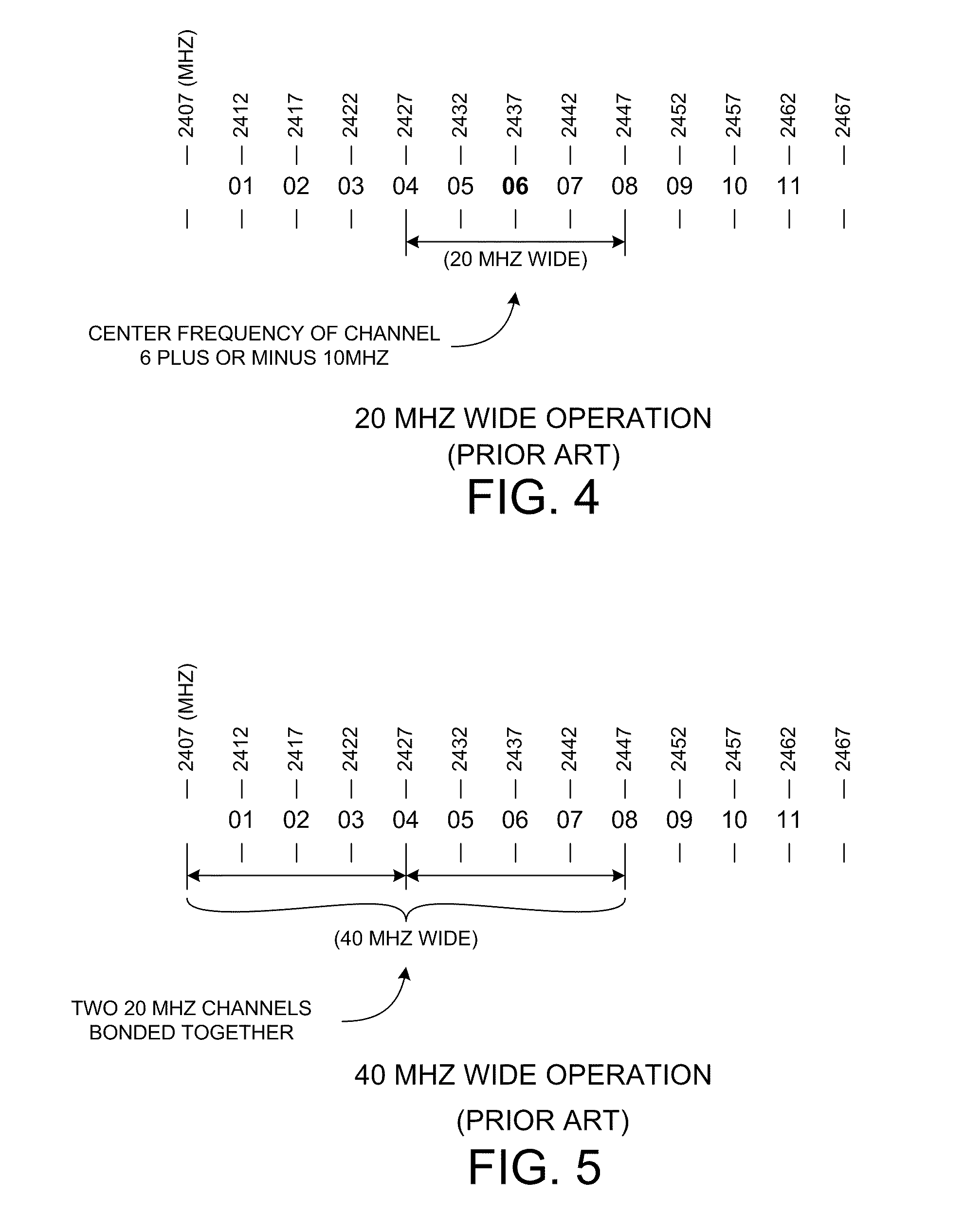Combined background and 20/40 coexistence scan
a background and coexistence scan technology, applied in the field of scanning mechanisms in wireless networks, can solve problems such as tight 5 mhz spacing between the eleven channels, insufficient free channels left for other devices, and inability to solve tight background scans, so as to reduce the number of scans, reduce power consumption, and increase data traffic throughput
- Summary
- Abstract
- Description
- Claims
- Application Information
AI Technical Summary
Benefits of technology
Problems solved by technology
Method used
Image
Examples
Embodiment Construction
[0038]FIG. 9 is a simplified diagram of an IEEE 802.11(n) wireless network system 100 in accordance with one novel aspect. System 100 includes multiple IEEE 802.11(n) compliant Access Point stations (AP stations) 101-103 that are connected to a network 104. Network 104 may be a Local Area Network or another network, and may be connected directly or indirectly to the Internet. The AP stations are typically connected to network 104 via hardwired connections 105-107. Each of the AP stations has a respective wireless communication coverage cell. For example, AP station 101 has coverage cell 108, AP station 102 has coverage cell 109, and AP station 103 has coverage cell 110. A mobile non-Access Point station (non-AP station) 111 is within coverage cell 108 and is connected to and associated with AP station 101. Non-AP station 111 can be made to roam within the coverage areas 108-110 without breaking communication with network 104. Non-AP station 111 may, for example, roam along a path in...
PUM
 Login to View More
Login to View More Abstract
Description
Claims
Application Information
 Login to View More
Login to View More - R&D
- Intellectual Property
- Life Sciences
- Materials
- Tech Scout
- Unparalleled Data Quality
- Higher Quality Content
- 60% Fewer Hallucinations
Browse by: Latest US Patents, China's latest patents, Technical Efficacy Thesaurus, Application Domain, Technology Topic, Popular Technical Reports.
© 2025 PatSnap. All rights reserved.Legal|Privacy policy|Modern Slavery Act Transparency Statement|Sitemap|About US| Contact US: help@patsnap.com



